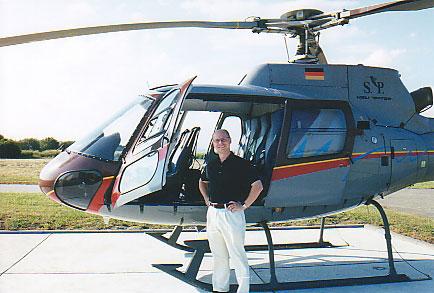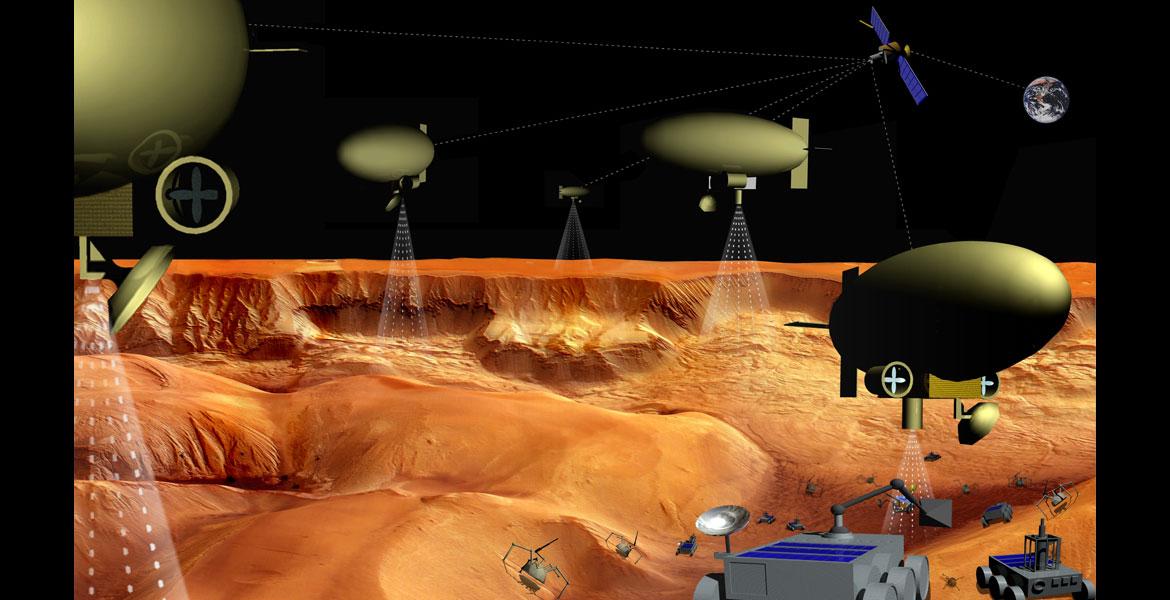Engineering Professor Receives Awards for Research into Artificial Retina and Robotic Planetary Exploration
A College of Engineering faculty member was recently honored for his work in helping the blind to see and developing a more efficient way to explore distant planets.
Wolfgang Fink, associate professor of electrical and computer engineering and biomedical engineering, received the NASA Board Award as well as R&D Magazine’s 100 Award and Editors’ Choice award for 2009.
NASA recognized Fink, who holds the Edward and Maria Keonjian Chair, for a tier-scalable reconnaissance technology that could some day see fully automated planetary exploration missions.
The system would use a planetary orbiter, airships in the form of inflated balloons or blimps, and numerous small expendable devices sent to the planet’s surface for scientific exploration.
Unlike current missions, which typically see a single lander or rover sent to a planet’s surface armed with a list of tasks to perform, Fink wants to break the system up into smaller components that can decide, without the direction of researchers on Earth, what is of greatest scientific interest on a distant planet. The system could also be managed from Earth if desired, he said.
For example, if the orbiter, with a global view of the planet, detected methane venting from the planet’s surface, it could direct the airship to the region. The airship would pinpoint the site of the activity and send down several small testing devices to collect data. The data would be sent from the surface up to the airship or orbiter for analysis, and then back to scientists on earth.

This process could be repeated at other sites on the planet as needed, he said.
By keeping the heavy computational power in the air, the surface-based mission agents can be small, inexpensive and expendable, Fink said, and a large number can be used for each mission, allowing a greater range of scientific exploration.
Such autonomous mission direction would cut the time spent communicating between Earth and distant planets to direct every dig, probe and sample made, and could save costs of staff performing hands-on mission direction, Fink said.
A self-directed mission could also better handle unexpected anomalies that might be encountered, he said.
While some components of the tier-scalable reconnaissance plan are already in place, like using images from the Mars Reconnaissance Orbiter to direct the travels of NASA Martian rovers Sprit and Opportunity, it is likely that a planned mission to Saturn’s moon Titan will be the first to see the system fully implemented, Fink said.
Fink’s work on developing an artificial retina gained him the R&D Magazine 100 Award and the publication’s Editors’ Choice Award as one of the top three of the 100 Award winners.
The U.S. Department of Energy-funded project, which included an array of academic and national laboratory partners, helps restore some sight in blind patients with age-related macular degeneration or retinitis pigmentosa, two diseases that leave the eye’s retina unable to convert incoming light into electrochemical signals the eye uses to allow people to see, Fink said.
The system uses an eyeglass-mounted camera, a control chip and electrode array implanted in the eye, and an image processing and stimulation optimization device worn on a belt.
The image processing and stimulation optimization device on which Fink and associate Mark Tarbell worked allows the patient to make the most of the sight offered by the 60-pixel electrode array implanted in the eye.
Plans call for eventually expanding the array’s capability to 1,000 pixels, which would allow gross facial recognition and large-font reading, he said.
Researchers hope the artificial retina, currently in clinical trials, will be available in the next several years, Fink said.


